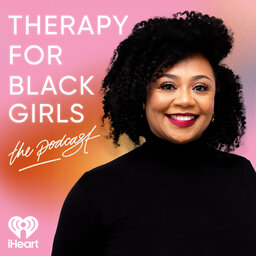BONUS: The Mental Health Benefits of Birdwatching
The Therapy for Black Girls Podcast is a weekly conversation with Dr. Joy Harden Bradford, a licensed Psychologist in Atlanta, Georgia, about all things mental health, personal development, and all the small decisions we can make to become the best possible versions of ourselves.
In this bonus episode, Tammah Watts, LMFT shares how her life took an unexpected turn after suffering a neurological injury following a routine surgery, which left her unable to return to the work she loved. She opens up about how birdwatching became therapeutic for her, allowing her to connect with nature, practice mindfulness, and find purpose and joy in observing birds. She also gives us a peak inside her latest book, Keep Looking Up: Your Guide to the Powerful Healing of Birdwatching.
Resources
Visit our Amazon Store for all the books mentioned on the podcast.
Sisterhood Heals is now available for pre-order!
Vote for us in The Webby Awards!
Where to Find Tammah
Keep Looking Up: Your Guide to the Powerful Healing of Birdwatching
Stay Connected
Is there a topic you'd like covered on the podcast? Submit it at therapyforblackgirls.com/mailbox.
If you're looking for a therapist in your area, check out the directory at https://www.therapyforblackgirls.com/directory.
Take the info from the podcast to the next level by joining us in the Therapy for Black Girls Sister Circle community.therapyforblackgirls.com
Grab your copy of our guided affirmation and other TBG Merch at therapyforblackgirls.com/shop.
The hashtag for the podcast is #TBGinSession.
Make sure to follow us on social media:
Twitter: @therapy4bgirls
Instagram: @therapyforblackgirls
Facebook: @therapyforblackgirls
Our Production Team
Executive Producers: Dennison Bradford & Maya Cole Howard
Producers: Fredia Lucas, Ellice Ellis & Cindy Okereke
 Therapy for Black Girls
Therapy for Black Girls


